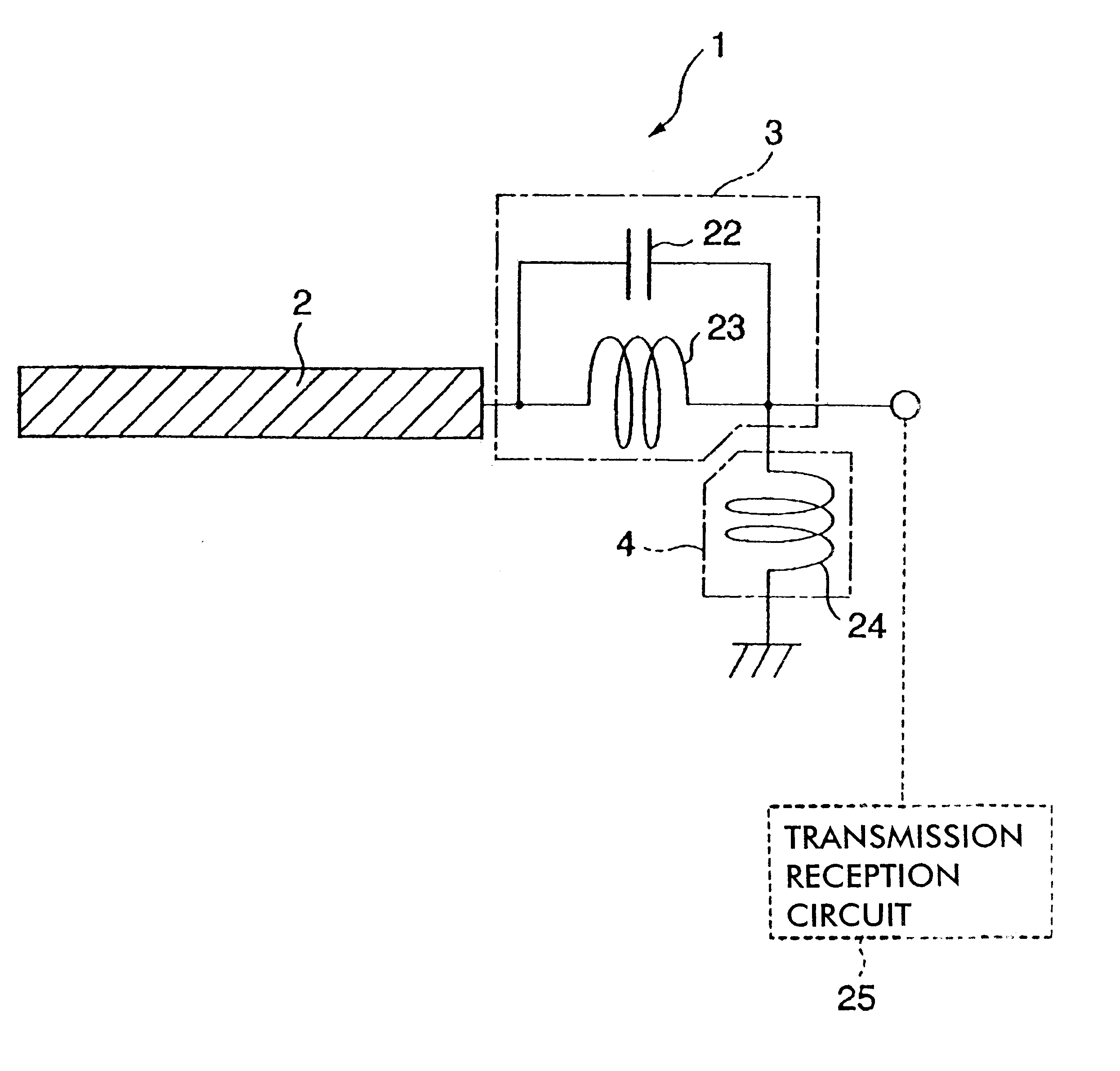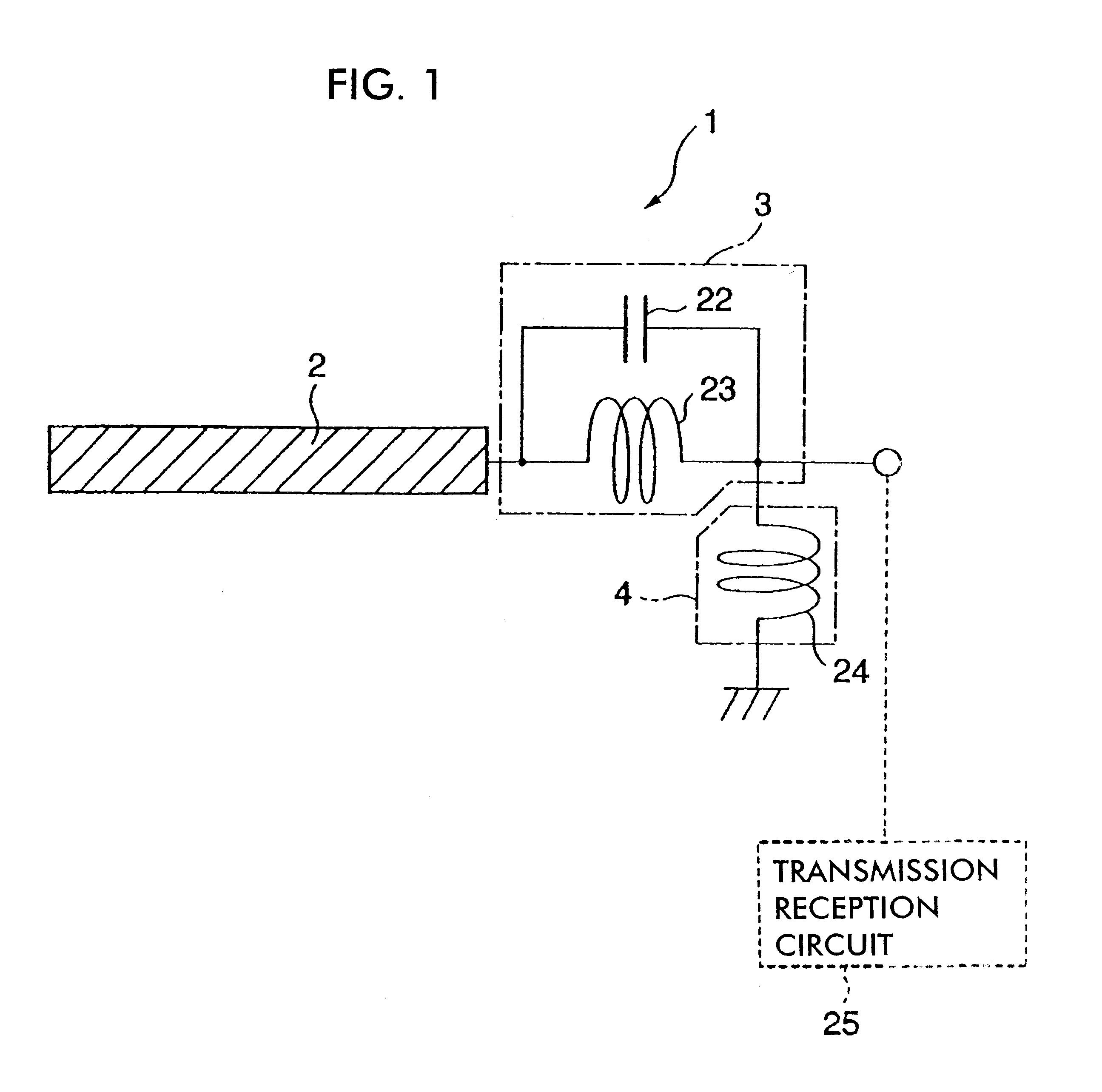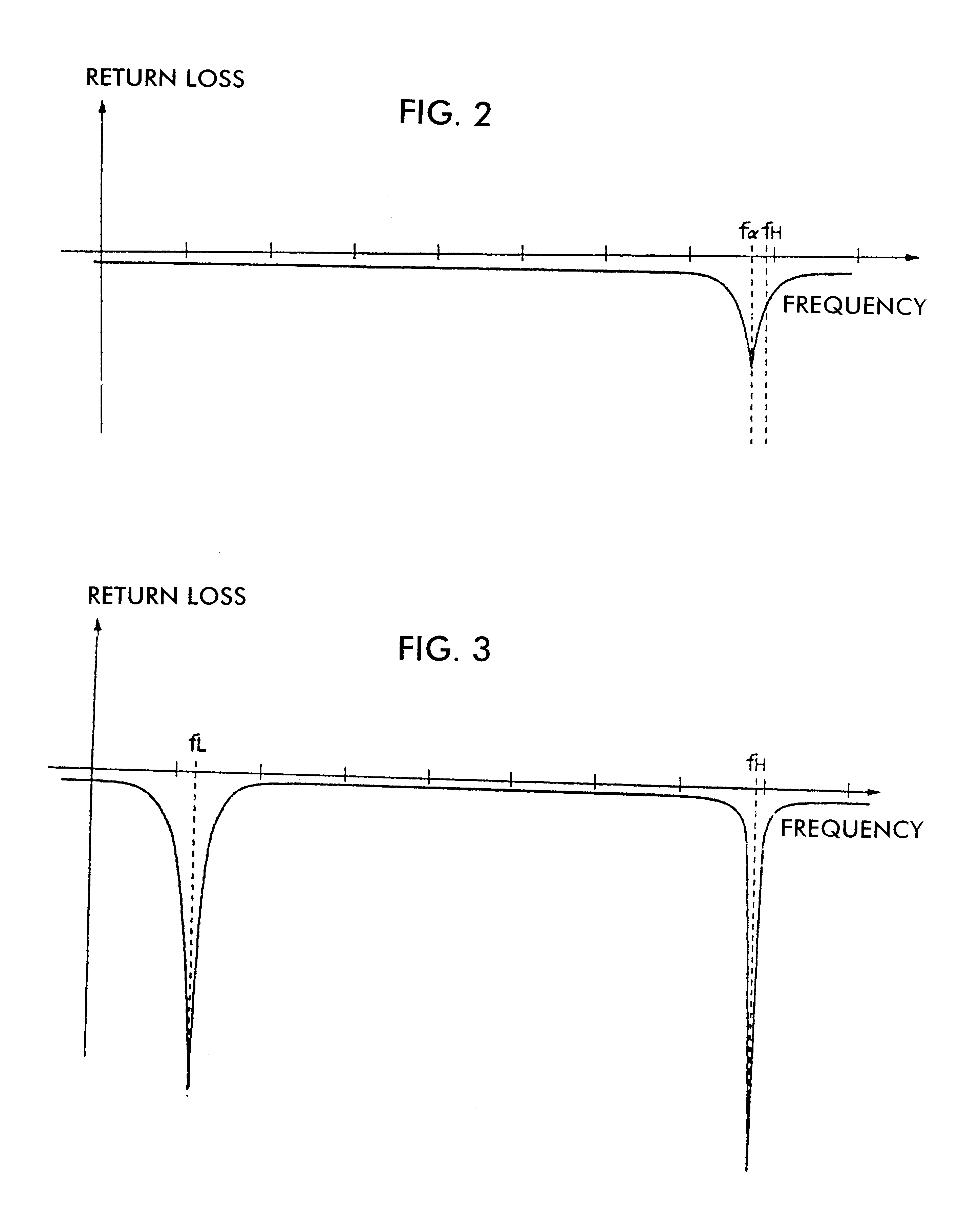Antenna device and radio equipment having the same
a radio equipment and antenna technology, applied in the direction of resonant antennas, substantially flat resonant elements, multiple-port networks, etc., can solve the problems of increasing cost and reducing antenna sensitivity
- Summary
- Abstract
- Description
- Claims
- Application Information
AI Technical Summary
Benefits of technology
Problems solved by technology
Method used
Image
Examples
first embodiment
The antenna conductor portion 2 is made of a conductor material, and operates to transmit and receive radio waves. Different forms of the antenna conductor portion 2 are available. Any one of a plurality of the forms of the antenna conductor portion 2 may be employed in the FIGS. 4A to 7B show examples of the forms, respectively.
In the example of FIG. 4A, the antenna conductor portion 2 comprises a conductor film (conductor portion) 7 for transmission-reception of radio waves, which is formed on the surface of a substrate 6 made of a dielectric or magnetic material. In the example of FIG. 4B, the antenna conductor portion 2 is formed of a conductor wire which comprises a conductor wire member of a helical antenna portion 9 provided in the top of a whip antenna portion 8. In the example of FIG. 4B, the antenna conductor portion 2 comprises a combination of the whip antenna portion 8 with the helical antenna portion 9 connected to each other, as described above. The antenna conductor...
second embodiment
In the second embodiment, the inductor portion 23 constituting the LC parallel resonance circuit 3 comprises two inductors 26 and 27 connected in series with each other, as shown in FIG. 8. One end of a capacitor 28 is connected to the node A between the inductors 26 and 27. The other end of the capacitor 28 is connected to the anode side of a PIN diode 29. The cathode side 29 of the PIN diode 29 is connected to the power supply side of the inductor 27.
Moreover, one side of a resistor 30 is connected to the node B between the capacitor 28 and the PIN diode 29. A capacitor 31 is incorporated between the other side of the resistor 30 and ground. A voltage input portion 32 is electrically connected to the node C between the resistor 30 and the capacitor 31.
Referring to the properties of the PIN diode, the resistance to an AC signal varies correspondingly to DC current flowing through the PIN diode. When no DC current flows through the PIN diode, the resistance to an AC signal becomes v...
third embodiment
In the third embodiment, characteristically, the capacitor portion 22 contains a varicap diode. Regarding the varicap diode, the parasitic capacitance continuously varies correspondingly to applied voltage. Accordingly, the capacitance C of the capacitor portion 22 can be easily varied by changing the voltage applied to the varicap diode. Therefore, the resonance frequency of the LC parallel resonance circuit 3 is varied only by changing the voltage applied to the varicap diode. Thus, the lower frequency band for transmitting and receiving radio waves can be varied and set correspondingly to the specifications of the antenna device 1. Needless to say, the higher frequency band can be also varied and set.
For the capacitor portion 22 having the varicap diode, various circuit configurations can be provided. For example, the capacitor portion 22 comprises a single varicap diode 36 in the example of FIG. 13A. A resistor 37 and a capacitor 38 connected in series with each other are connec...
PUM
 Login to View More
Login to View More Abstract
Description
Claims
Application Information
 Login to View More
Login to View More - R&D
- Intellectual Property
- Life Sciences
- Materials
- Tech Scout
- Unparalleled Data Quality
- Higher Quality Content
- 60% Fewer Hallucinations
Browse by: Latest US Patents, China's latest patents, Technical Efficacy Thesaurus, Application Domain, Technology Topic, Popular Technical Reports.
© 2025 PatSnap. All rights reserved.Legal|Privacy policy|Modern Slavery Act Transparency Statement|Sitemap|About US| Contact US: help@patsnap.com



